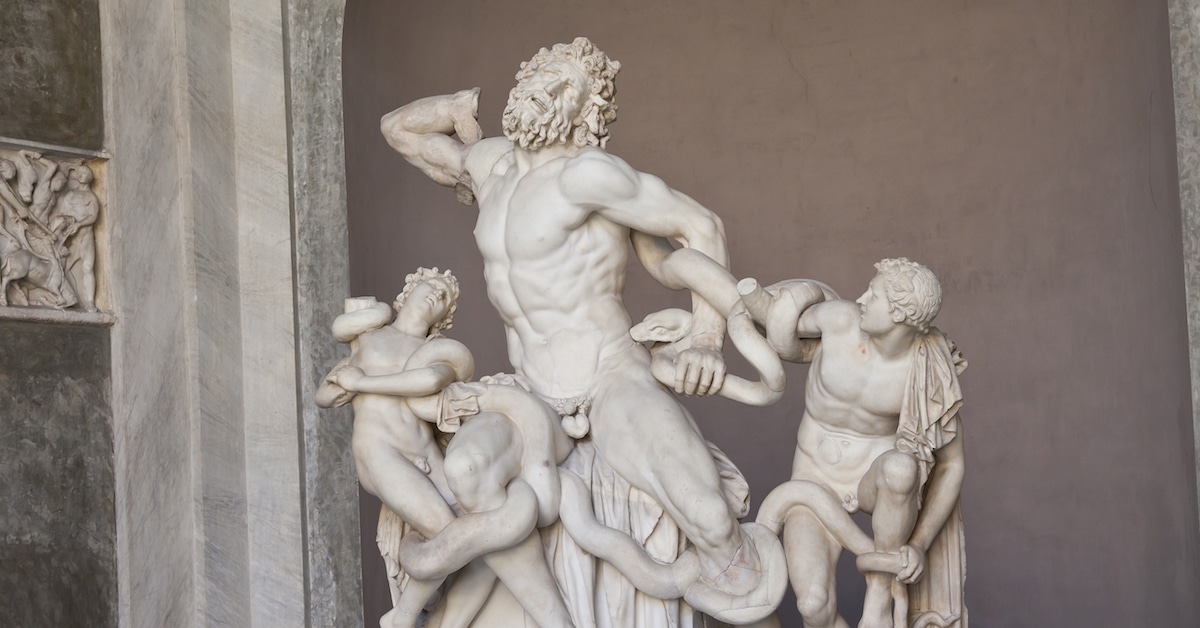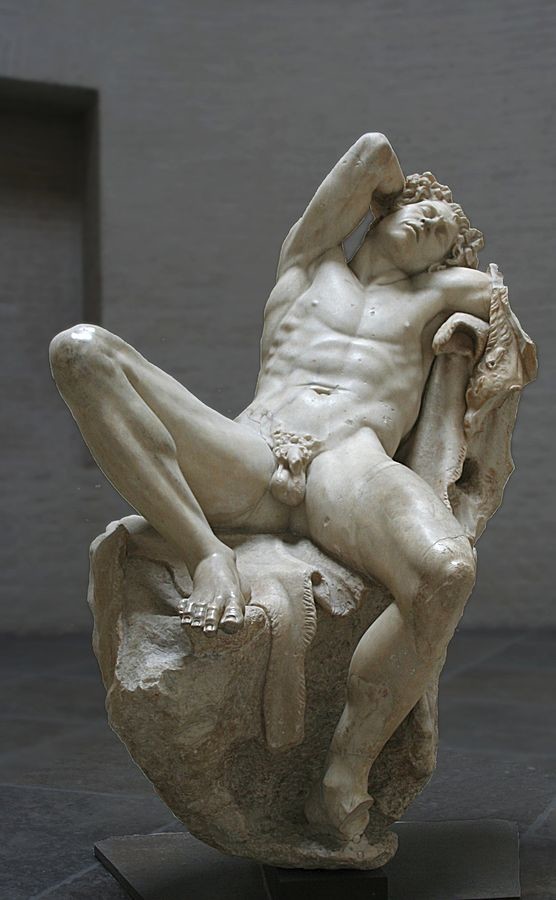Week 7
The Age of Alexander refers to that two or three century period after the execution of Socrates (399) in Athens, the end of democracy in a sense, and the new age coming that will be dominated by that new state to the west: Rome. This period was viewed by the 19th Century art critics as a period of decline, a period when the high ideals of Golden Age Athens were jettisoned and new baser values of an age of dictators arose. A new culture in new centers such as Greek Alexandria would raise up with new values. One of the things you will all notice about this art, called "Hellenistic" is a new realism. The quest for the perfect balanced view of the perfect human being is now given up in favor of an intense new realism and emotionalism. And the new intense feelings will be especially evident in the sexy or violent poses of many of the most famous works of this period. You have two examples here: the Laocoön and His Sons group of figures now in the Vatican Museum, and this sleeping faun (satyr) called the Barberini Faun in Munich. They both exhibit a kind of intensity -- one violent, the other a beckoning sexiness.
RECOMMENDED READING
For Hellenistic art in Honour, see chapter five, starting on page 165.


